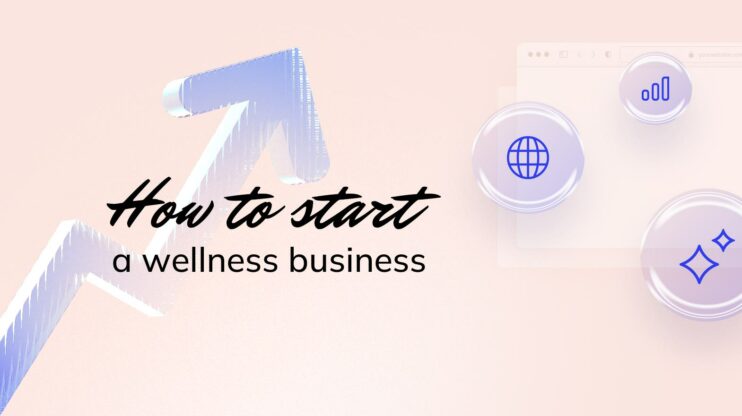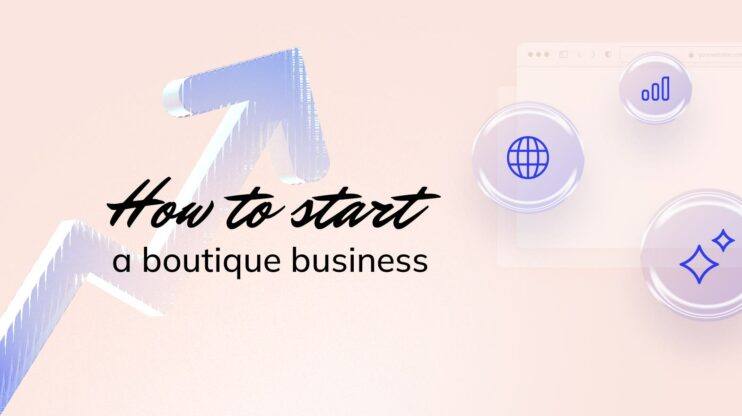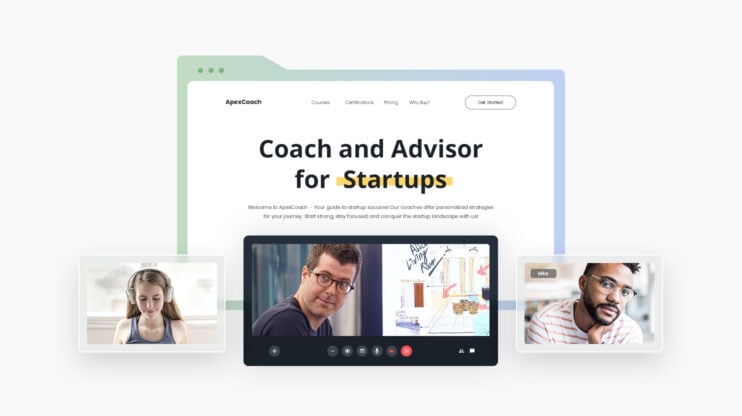Yes, digital products are still booming in 2025. No, you haven’t missed the boat, but let’s get one thing straight: it’s not passive income, and it’s definitely not magic.
If you’ve been lurking on Reddit, skimming Twitter threads, or watching TikToks about selling ebooks or Notion templates, you’ve probably felt two things at once: “Everyone’s doing this,” and “Maybe I could too.” Yes, you can. You don’t need a huge audience, a genius idea, or a design degree. Find a real problem you can solve and deliver a simple solution.
We’re here to show you how to start a digital product business from scratch, with product ideas you can pull off and a roadmap to get your first sales (without getting stuck in perfection or planning spirals). Let’s break it down.
What is a digital product business?
A digital product business is one where you create and sell non-physical goods: things people can download, stream, or access online. These products are made once and sold repeatedly, often with no ongoing cost. You don’t have any inventory or shipping. It’s just you, your laptop, and an internet connection.
What counts as a digital product?
It’s broader than most people think. If it delivers value without being printed or shipped, it counts. Here’s a quick breakdown:
- Knowledge-based: Ebooks, mini courses, checklists, Notion systems
- Creative assets: Fonts, Lightroom presets, stock photos, UI kits
- Tools and templates: Resume builders, business dashboards, website themes
- Experiential: Guided journals, meditations, audio prompts
- Software and tech: WordPress plugins, Figma components, no-code tools
If it lives online and delivers value without needing to be printed or shipped, it’s a digital product.
Why now is still a great time to start
The market is noisy, but that’s a sign of demand, not defeat. In 2025, more people are working independently, launching side hustles, and seeking smarter ways to save time or build faster. Digital products solve real problems for them.
Platforms, tools, and AI make it cheaper and faster than ever to start. To launch something real, you simply need to focus on a problem worth solving.
Best digital products to sell in 2025 (by type)
Before we talk about how to start a digital product business, let’s look at what’s working. The best digital products in 2025 are useful, quick to consume, and solve a very specific problem for a very specific buyer. Use this list to spark ideas. Ask yourself: Which one fits my skills, and which problem can I solve better or faster than what’s already out there?
Type 1: Knowledge as product (but specialized)
| Format | Who buys it | Why it works |
| Mini-courses (15–30 mins) | Time-starved learners | People pay to skip trial-and-error. They want fast, focused outcomes. |
| Niche guides or ebooks | Freelancers, founders | A $29 guide on onboarding clients can save someone hours of Googling. That’s real value. |
| Notion/ClickUp systems | Solopreneurs, content creators | Ops templates help people run smoother without starting from scratch. |
Type 2: Tools, templates, and kits
| Format | Who Buys It | Why It Works |
| Figma kits, Canva templates | Designers, small business owners | Look professional in half the time. |
| Audit checklists, calculators | Freelancers, consultants | Ready-to-use tools = instant trust and time savings. |
| Legal templates, pitch decks | Early-stage founders | People want credibility without hiring a $200/hour lawyer. |
Type 3: Experiential or creative digital goods
| Format | Who Buys It | Why It Works |
| Meditations, audio prompts | Wellness audiences | Low-cost, feel-good, easy to try—and deeply habit-forming. |
| Digital journals, planners | Self-improvement lovers | People crave structure, without needing a physical notebook. |
| Fonts, overlays, AR filters | Creators, streamers, designers | Small, viral purchases that help people stand out. |
With any of these types and formats, try not to go broad. Go specific. Solve a real, narrow problem, and deliver it in a format your audience already uses. At the very end, we’ll also introduce a hybrid model for your digital products, which you can sell for more by creating more value.
How to start a digital product business in 6 simple steps
Starting is the hardest part, but the key is momentum, not perfection. Independent of your product choice, there’s a 6-step clear roadmap you can follow to make the journey simpler for you.
Step 1: Choose a problem that needs solving
Too many people start with the product they want to create before checking if anyone needs it. Instead, you should start with this question: What’s something you’ve figured out that others are still struggling with? Try this 3-part filter to help you with it:
| Filter | Ask yourself |
| Problem | What do people constantly ask me for help with? |
| Pain | What’s something annoying, time-wasting, or overwhelming for a niche group? |
| Pay | Would someone pay to fix this? How urgent is it? |
For example, a freelancer who’s tired of customizing the same emails needs a cold email swipe file. A college student who figured out how to land internships can be interested in buying a mini-guide and a resume template. Your experience is your edge. Look at what you’ve overcome, solved, or simplified. That’s your starting point.
Step 2: Validate the idea (before you build anything)
Validation isn’t asking friends if your idea is cool. Of course, they’ll say it is. Validation is proving that strangers care enough to engage or pay. This is how to validate smart:
- Write a short pitch: “I’m thinking of creating [X] to help [Y] with [Z]. Would this be useful?”
- Post it on Reddit, Threads, Twitter, Discord, etc. Choose the right channels to share.
- Make a no-design waitlist
- Offer a free beta to early adopters and listen closely to what they say
In this process, there are real signals you have to pay attention to. Those include saves, signups, or presales, and DM questions (not just likes). If you hear crickets, pause. This is not bad, but you need to stop for a moment and adjust yourself to the problem and the audience. It’s one of the most overlooked steps when people ask how to start a digital product business that works.
Step 3: Build something small, useful, and clear
Your first product should feel like a “tiny miracle” for your buyer, not a massive all-in-one course. If it’s something big, it can exhaust them fast. Everyone is looking for the quickest solutions out there, so you should ask yourself how you can become the one to deliver them.
The first decision is to choose the right format for your digital product. You should match the right format with the type of problem you’re solving, so you can build something useful, fast:
| Format | Good for | Why it’s helpful |
| Notion system | Planning, organizing, tracking workflows | Perfect for productivity-related products |
| Canva templates | Design-heavy tasks, social media content | Great if your audience values visuals but lacks design skills |
| PDF guides/checklists | Teaching step-by-step processes | Good for summarizing your unique know-how |
| Calculators/tools | Helping people make decisions faster | Useful for financial, pricing, or time-saving tools |
| Audio packs | Meditation, affirmations, learning on-the-go | Ideal for emotional or self-help products |
Another thing to keep in mind is that you might know a lot and want to share it, but overdoing it can do more harm than good. You should focus on one promise, not everything you know. Make it easy to use on the first try. Hook people. “Wow, this saved me 3 hours” is your target.
Step 4: Set up a sales page that feels human
People don’t buy digital products from random usernames or half-filled Gumroad pages. They buy from people they trust. That’s why having your own website isn’t just a “nice-to-have.” It’s the core of your brand. It makes you look legit. It shows you’re serious, and it gives people a reason to believe that what you’ve created is worth paying for.
Even if your product lives on Gumroad or Lemon Squeezy, a simple site where you introduce yourself, share your backstory, and link to your product gives you an instant credibility boost.
Your concern might be that it can be too costly, or that it will take ages to work with developers and then manage all the technical stuff. But in reality, all you need is an all-in-one builder tool like 10Web’s AI Ecommerce Website Builder.
You just describe your product(s), and it instantly generates a full website: layout, content, even copy you can tweak. You can customize it as much or as little as you want. It’s fast, WordPress-based, mobile-friendly, and easy to update with their AI Co-Pilot.
In one dashboard, you can manage:
- Your product landing page
- Email collection
- Customer support info
- Updates, pricing changes, and new launches
Basically, it gives you a home for your business. Something that grows with you as you build more products, gather testimonials, and become known in your niche. Plus, all this is done in 3 simple steps:
- Describe your business: What are you selling and who’s it for?
- Let AI do its part: Instantly get a full WordPress site with WooCommerce integration, product pages, and design.
- Customize & launch: Change colors, fonts, and more, then hit publish.
Once you’re done, you can optimize, adjust and edit with AI by chatting with it, or a drag-and-drop editor, based on your preferences.
What to include on your product pages?
- A headline that names the problem and result: For example, “Stop guessing your rates, use this pricing calculator built for creatives”
- A short story: Why did you make this? Who is it for?
- Bullet points: What’s included? What will it help with?
- Simple FAQ: Help nervous buyers feel more confident
- One-click checkout: Link your Gumroad or sell directly from your 10Web page
- Optional: Free sample to collect emails and build trust
Step 5: Launch, listen, and improve
You don’t need a “launch strategy,” but a simple communication message that you want to be helpful. Show people that you made the product because you were tired of a real pain point. Invite them in if they feel the same way. Show behind-the-scenes stuff: how you built it, and why you built it. Then ask for early feedback.
If you stop here, you won’t be much different from many others who might have some success at first, but don’t grow. You need to not only listen to the feedback, but improve based on it. Even 5 users can tell you what’s confusing, what’s good, and what’s missing.
The second version is always better: launch, listen, refine, relaunch. This is how you build something people want to recommend.

Create your online store in minutes!
Looking to sell online? Develop and launch your store with 10Web AI Ecommerce Website Builder.
Step 6: Turn That Product Into an Engine for Growth
Once people start buying, don’t stop, and build momentum by using your product as proof of expertise. Break your product into social content (examples, lessons, mistakes). Turn feedback into upgrades or bundles, or offer a premium version or upsell (e.g., “Lite” vs “Pro”).
Create an email list by offering new tips, templates, or beta invites, which you can use as a community building channel. Your communication and feedback loop with your audience will be faster this way, and can even lead to second product ideas based on what people ask for.
Mistakes to avoid when starting a digital product business
Most people get stuck not because they’re lazy, but because they’re doing too much, too early. This is the main sentiment when you spend a couple of minutes scrolling through forums, reading about what people regret doing. There are other common mistake patterns as well that you should avoid at all costs:
- Building a full product before testing: You don’t need 100 pages or 5 modules. Start tiny. Share the idea, then see if anyone wants it.
- Choosing a vague niche like “productivity” or “self-growth”: If your product could be for anyone, it’ll connect with no one. Zoom in. “Notion for ADHD freelancers” beats “Notion for everyone” every time.
- Copying prices from other people: Their $19 ebook might be underpriced, or aimed at a totally different crowd. Your price should match the value you’re delivering, not the competition.
- Waiting until it’s “ready”: It’ll never feel ready. Launch anyway. Feedback will show you what matters.
Bonus: The hybrid model to turn services into scalable products
Not all digital products have to be ebooks or templates. In fact, some of the best-selling digital offers start as services, and then get productized (or vice versa). This hybrid model lets you keep the human touch while still saving your time and scaling your income.
A productized service is a service that’s packaged and sold like a product: fixed price, fixed scope, repeatable outcome. The key is removing endless back-and-forth and turning your expertise into a plug-and-play solution. For anyone learning how to start a digital product business, this model can be a smart bridge between trading time and building leverage.
There are two options you can consider: add your digital product to the service, or upsell the service for a higher price. Let’s see which one will work best for you.
Option 1: From service to digital product
Let’s say you help freelancers or students build personal brands. Instead of building every site from scratch, you could:
- Use 10Web’s AI CV Website Builder to create a clean, optimized resume website
- Duplicate the structure and adjust colors/fonts for each buyer
- Add a quick-start guide, copywriting prompts, and a Notion resume template
- Sell it as a DIY Resume Website Kit
You’ve now turned a web design service into a repeatable digital product. What’s even better is that 10Web lets you:
- Launch these sites in minutes with AI
- Host, optimize, and manage speed/security automatically
- Offer clients easy editing access without ongoing dev work
You do it once. Sell it 10, 50, 100 times, with optional add-ons like 1-on-1 launch call, or custom domain setup.
Option 2: Service as an add on (to charge more)
Now, imagine you sell a Notion resume template, a job search planner, or a CV copywriting guide. Some buyers love the idea, but don’t want to set it up themselves. This is where you offer a “done-for-you” version for an extra price.
The main twist is that you’re not coding anything or hiring a designer. You’re using tools like White-Label Website Builder to build and deliver polished digital resumes or portfolios in minutes, under your own brand name (10Web’s name is not visible anywhere).
Your buyers get a personalized digital product that makes them look credible and professional. They feel proud of it. You get:
- A bigger price tag on each sale
- Zero extra workload (thanks, AI)
- Happier customers who feel taken care of
This model works because it combines speed, ease, and trust. You’re not just handing over a file, you’re giving them a result.
Resumes are just an example. You can use the same approach to turn ebooks into gated content sites, Notion systems into branded member hubs, or checklists into mini landing pages that grow your email list. With 10Web, anything you’d normally build once and hand off can become a repeatable productized offer, with hosting, design, and updates handled by AI. You stay creative. The tech works for you.
Start your digital product business in 2025
Digital products aren’t just trendy, they’re one of the most accessible, scalable ways to build a business today. However, it’s definitely not the hype about passive income or overnight success. What works is this:
- Start with a real pain point, not just a cool idea
- Test interest before you build
- Create something small but genuinely useful
- Launch it fast, even if it’s messy
- Improve based on feedback
- Repeat with more confidence
This is the core of how to start a digital product business: solving one real problem in a way people want to pay for. The more you ship, the more you learn, and earn.
None of this should be done from scratch AI Ecommerce Website Builder. With it you can build and sell your products without hiring designers or developers. Just describe what you want, and the AI helps you launch a professional site, fast, optimized, and ready to grow with you.

Create your online store in minutes!
Looking to sell online? Develop and launch your store with 10Web AI Ecommerce Website Builder.
FAQ
How do you start a digital product business? Can you really make money selling digital products in 2025? What’s the best product for a beginner? Where do I sell digital products? How do I stand out in a saturated niche? What’s the best way to market digital products without ads? How do I build a customer base if I don’t have a social following?















